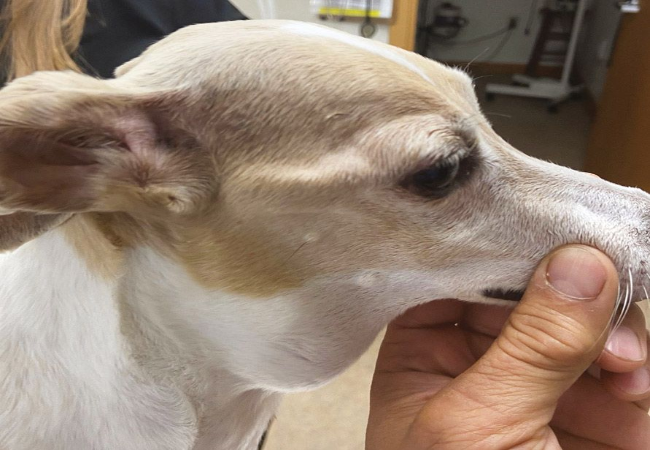Veterinary Guide to Canine Hyperparathyroidism 2025 🩺🐶

In this article
Veterinary Guide to Canine Hyperparathyroidism 2025 🩺🐶
By Dr. Duncan Houston BVSc
🧬 What Is Hyperparathyroidism?
Hyperparathyroidism is a condition marked by excessive production of parathyroid hormone (PTH), leading to abnormally high blood calcium (hypercalcemia). In dogs, this can be due to:
- Primary: a tumor (adenoma, carcinoma) or hyperplasia producing PTH autonomously.
- Secondary: caused by chronic kidney disease or dietary imbalances, prompting compensatory overproduction of PTH.
👥 Who’s Affected?
- Primary: typically older dogs (5–15 years); common breeds include Keeshonds (genetic risk), Labs, GS‑dogs, Goldens, Poodles, Shih Tzus, Cocker Spaniels.
- Secondary: any dog with chronic kidney disease or severe calcium/Vitamin D imbalance.
👀 Signs to Watch
Clinical signs often reflect elevated calcium ("stones, bones, groans, thrones, and psychiatric overtones"):
- Increased thirst & urination; urinary stones or UTIs common (~30–50 %).
- Lethargy, muscle weakness, twitching, trembling.
- GI upset—vomiting, reduced appetite, constipation.
- In severe cases: stupor, coma, bone fracturing (“rubber jaw”).
🔬 Diagnosis Pathway
- Bloodwork: Elevated total & ionized calcium, low phosphorus; elevated PTH alongside normal/low PTHrP confirms primary disease.
- Urinalysis: Check for stones, UTIs, and dilute urine.
- Imaging:
- Cervical ultrasound for enlarged parathyroids (>4 mm suggestive of adenoma.
- Abdominal imaging to screen for stones, kidney disease.
- Thoracic X-rays to rule out cancer-linked hypercalcemia.
- CT is available for precise surgical planning.
- Differential diagnoses: exclude cancer, Addison’s, vitamin D toxicity, granulomatous disease.
📈 Primary vs Secondary Comparison
| Primary | Secondary | |
|---|---|---|
| Cause | Parathyroid adenoma/hyperplasia/tumor | CKD or dietary calcium/Vitamin D imbalance |
| Calcium | High | Initially low/normal, then high PTH |
| PTH | High/normal despite high Ca | High, compensatory |
| Treatment | Surgery ± ablation | Address CKD/nutritional cause |
🛠️ Treatment Approaches
🔹 Primary Hyperparathyroidism
- Parathyroidectomy: surgical removal of affected gland(s)—gold standard with ~90% cure rate.
- Minimally invasive ablation: ultrasound-guided ethanol or heat ablation—high success (~90%), less invasive.
- Peri-op care: hospital fluids, close ionized calcium monitoring, and supplements as needed due to post-op hypocalcemia risk.
🔹 Secondary Hyperparathyroidism
- Correct calcium/Vitamin D ratio—balanced diet, supplementation.
- Manage underlying CKD—dietary phosphorus restriction, renal therapies.
- Supplemental calcium or calcitriol may be required short‑term.
⌛ Prognosis & Monitoring
- Primary: Prognosis excellent with surgery or ablation; monitor calcium for 1–2 weeks post-op.
- Secondary: Prognosis varies—good if caught early, guarded if CKD-associated.
- Schedule follow-ups: calcium, phosphorus, renal values, imaging, and blood pressure every 1–3 months initially.
🏡 Home Care & Lifestyle
- Stick to prescribed diets and supplements carefully.
- Provide fresh water and encourage drinking.
- Watch for signs of urine changes, stones, or lethargy.
📱 Ask A Vet Ecosystem Support
- Tele‑app consults: Upload lab/imaging to adjust medications and diet remotely.
- Reminders: Manage calcium checks, medications, supplements via app..
🎓 Case Spotlight: “Zoey” the Keeshond
Zoey, 11 years old, was diagnosed after routine bloodwork showed Ca 12.5 mg/dL. Ultrasound revealed a 7 mm parathyroid adenoma. She had surgical removal and was monitored—calcium normalized, and she’s now thriving with regular remote Check‑Ins via Ask A Vet! 🐕💖
🔚 Key Take-Home Messages
- Excess PTH leads to hypercalcemia with non‑specific signs—always check calcium & PTH.
- Primary disease—surgery or ablation are effective; monitor calcium closely post-op.
- Secondary causes include CKD and dietary imbalance—manage underlying disease accordingly.
- Home care and consistent vet follow-up support long-term wellbeing.
- Ask A Vet helps every step—from diagnosis to diet and monitoring—virtually every time. 🩺📲
Dr Duncan Houston BVSc, founder of Ask A Vet. Download the Ask A Vet app for remote endocrine monitoring, calcium tracking, and guidance for your pup’s parathyroid health! 🐶❤️






